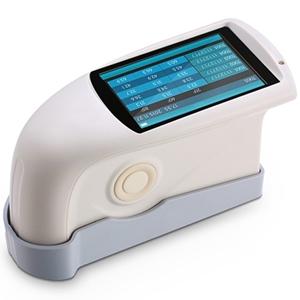Why You Need a Gloss Meter?
Gloss is an attribute of the surface of an object. The specular reflection ability of its surface to light can be measured by gloss, and the unit of gloss is generally expressed by GU. So, why measure gloss? How to use a gloss meter to measure it?
Why Measure Gloss?
 Consumer Behavior Factors
Consumer Behavior Factors
From the consumer's point of view, gloss affects consumers' visual experience, which in turn affects their consumption psychology and purchasing desire. Generally speaking, a product with good gloss can attract users and get more attention, so as to achieve the purpose of promoting sales. Especially for some high-end products, designers are also working hard to improve the gloss to gain more users' recognition, such as highly reflective body panels, glossy magazine covers or satin black designer furniture.
Product Quality Factors
Gloss is an important part of product quality, which can intuitively reflect the quality of products. For example, a decrease in gloss on the surface of a coating may indicate a problem with its curing, leading to other failures, including poor adhesion or lack of protection of the coating surface. It is for these reasons that many manufacturing industries monitor the gloss of their products, from automotive, printing and furniture to food, pharmaceuticals and consumer electronics.
How to Measure the Gloss of the Product Surface?
There are no more than two methods to detect the glossiness of objects, one is the visual observation method and the other is the instrument detection method. The former is mainly the visual observation of the human eye, which can be simply used to judge whether the gloss is large or small; the latter can obtain an accurate gloss value with the help of a gloss meter, and avoid the interference of human factors and environmental factors. The following describes how to use a gloss meter to measure the gloss of a product.
- Sample preparation. When selecting samples, the most representative parts of gloss should be selected. For example, the requirements for stone materials are: smooth and smooth surface, no warping, ripples, protrusions, bending, blisters and other appearance defects.
- Measure the angle. When measuring product gloss, the incident angle of the emitter should be selected to be 60 degrees, which is a common angle for gloss measurement. However, if the measurement result is greater than 70GU, it is a high-gloss product. In order to improve the resolution and the accuracy of the measurement result, the incident angle should be 20 degrees. Likewise, when the measurement result is less than 30GU, an incident angle of 85 degrees is used.
- Measurement method. The method of calculating the average value of multiple points and multiple measurements is adopted. You cannot just measure a single point.
- Precision analysis. The difference between the average values measured by repeated measurements on the surface of the same sample should not exceed 1 gloss in the laboratory and 2 gloss in the production site.

